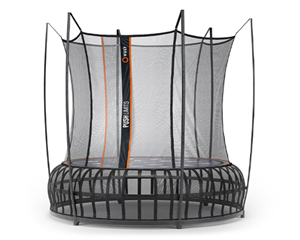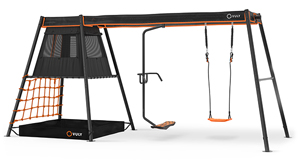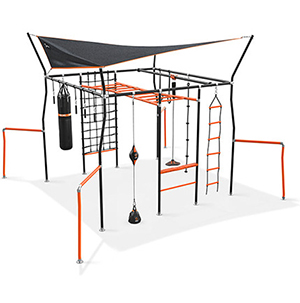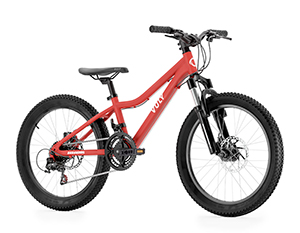Key Highlights
-
A jungle gym is a multi-component playground structure featuring bars, ropes, ladders and slides designed for climbing, swinging and hanging.
-
First patented in 1920 by Sebastian Hinton, it was created to promote children’s physical exercise, coordination and imaginative play.
-
Common materials include wood, metal and heavy-duty plastic; there are also indoor versions used in day-care and play-centres.
-
Jungle gyms support physical development (strength, balance, coordination), mental growth (imagination, problem-solving) and social interaction (sharing, turn-taking).
-
Size and complexity vary: younger children benefit from simpler, lower structures; older children and shared use demand larger frames, additional features and ample clearance.
A jungle gym is a type of playground that is commonly found in backyards and recreational areas. It is composed of interconnected bars, ropes, and other materials that children can climb, hang, swing, and slide on, providing them with a fun and challenging physical activity. Generally, it is designed to promote coordination, strength, and balance while fostering social interaction and imaginative play among children.
Jungle gyms are usually made of durable materials such as wood, metal, or plastic, which can withstand outdoor elements. They provide a safe and fun play area for children, making them an excellent choice for parents to keep their children active and engaged.
In addition to outdoor jungle gyms, indoor jungle gyms are also becoming increasingly popular. An indoor jungle gym is a play area for children that is located indoors, most commonly in play centers, daycare, and schools and is designed to provide a safe and stimulating environment for kids to play and explore. Like outdoor jungle gyms, their indoor counterparts are often equipped with various play structures such as slides, swings, monkey bars, and climbing walls.
Jungle gyms are not exclusively limited to children. Adults can also use them to stay physically active and engage in physical challenges. Backyard jungle gyms are often used for workouts, and can be used for pull ups, ninja training and more.
A variation of the jungle gym is the jungle workout gym. These can be found around the world and attract tourists and locals alike. These are often on the beach, and make use of natural weights and resistance machines made from wood, stone and rope.
From simple and straightforward structures to elaborate and multi-level designs featuring additional components like slides and swings; jungle gyms are suitable for people with different preferences and age groups. Whether installed indoors or outdoors, jungle gyms provide a safe and fun way to stay active and engaged while fostering social interaction and creative play for both children and adults.
The Origin of Jungle Gyms
The origins of the jungle gym can be traced back to 1920 when Sebastian Hinton, a lawyer based in Chicago, designed and patented the first-ever jungle gym. Driven by the belief that physical exercise is important for children's health and development, Hinton sought to create a secure and enjoyable avenue for play and exercise, thus creating the jungle gym.
The original jungle gym was a simple yet effective structure constructed using wooden bars and poles, which allowed children to engage in a variety of physical activities, such as climbing, swinging, and hanging. Hinton secured a patent for his invention under the trademark name "jungle gym," which rapidly gained popularity across playgrounds throughout the United States. Over time, jungle gyms have evolved, incorporating a wide range of features such as slides, swings, climbing walls, and tunnels, creating a diverse and more challenging and stimulating play environment.
Understanding the Structure of Jungle Gyms
Jungle gym designs can vary, but most will include bars, swings, slides, bridges, ladders, ropes, and a climbing frame.
Each component of the jungle gym offers some unique features. The bars and swings support the development of upper body strength and coordination, whereas slides offer an enjoyable means for children to engage in physical activity. Bridges and ladders also present stimulating challenges that enhance balance and coordination, while ropes and climbing frames aid in nurturing gross motor skills and building strength.
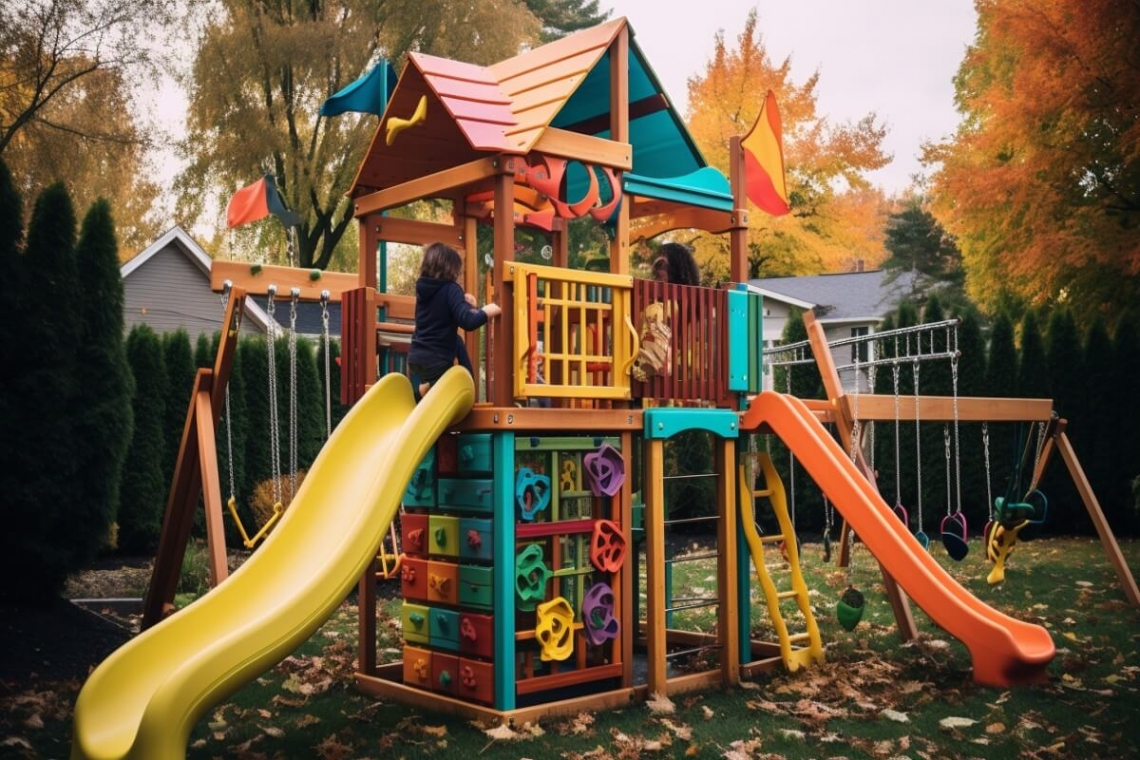
How Big are Jungle Gyms?
In terms of the size and dimensions of a jungle gym, this can significantly vary depending on the manufacturer's specifications and the intended age group. Jungle gyms designed for younger children generally have smaller dimensions and lower heights, while those for older children tend to be more substantial, featuring greater heights.
One important consideration when selecting a jungle gym is the available space in one's backyard. Measuring the designated area for installation and ensuring that the dimensions of the chosen jungle gym comfortably fit within the confines of that space is of paramount importance.
Why Consider Installing a Jungle Gym
Installing a jungle gym in your backyard holds several advantages, making it a worthwhile consideration for parents with young children. Here are some reasons why you should consider installing a jungle gym:
-
Promotes Physical Activity
Jungle gyms enable children to participate in a variety of exercises that contribute to the development of strength, balance, and coordination. Climbing, swinging, and sliding provide opportunities to work different muscle groups and improve overall fitness. Mayo Clinic and other health sources say that engaging in regular physical activity can enhance muscle strength, increase endurance, and improve the efficiency of the cardiovascular system, especially when done consistently.
-
Mental and Imaginative Development
Apart from physical health benefits, jungle gyms facilitate imaginative play and mental development. Encouraging children to explore various jungle gym activities nurtures problem-solving skills and creativity. Climbing and swinging activities contribute to spatial awareness and hand-eye coordination, which are fundamental aspects of cognitive development.
-
Encourages Socialization
Engaging in jungle gym activities together with other children fosters social skills such as sharing, taking turns, and communication. Playing in jungle gyms also provides opportunities to form new friendships and build relationships.
-
Increases Independence
Interacting with jungle gyms can be a great way for children to develop independence and confidence. As they navigate the various climbing, swinging, and playing elements of the jungle gym, children are encouraged to take risks and try new things. This can aid in fostering their independence as they learn to make decisions and tackle challenges on their own.
-
Provides Entertainment
A jungle gym offers more than just physical activity and mental development for children but is also a great source of entertainment. Children can spend hours climbing, hanging, swinging, and sliding on the jungle gym, enjoying the various challenges it offers. The jungle gym offers an opportunity for children to engage in imaginative play, creating their own games and scenarios while interacting with other children.
Overall, jungle gyms are an excellent means for motivating children to engage in physical play, making them a great choice for families. Whether installed in your backyard or indoor space, a jungle gym offers a safe and enjoyable environment for kids to enhance their coordination, strength, and balance while promoting social interaction, independence, and entertainment. By encouraging your children to play and explore in jungle gyms, you are supporting the development of their physical and social skills in a healthy and enjoyable way.




















































